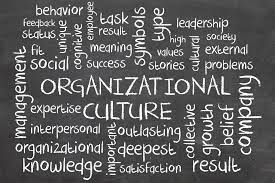Making Corporate Culture a Reality: Define and Embed (Part I of III)

Everyone has jumped on the corporate culture bandwagon. For some new converts, they like to espouse corporate culture as a recent discovery, or a new-fangled approach for compliance programs.
The story of corporate culture as a talismanic tool for ethics and compliance is really nothing new. Chief compliance officers knew the importance of corporate culture from the beginning. A number of companies separately called out ethics, either as a part of the chief compliance officers’ responsibilities or by creating a stand-alone chief ethics officer position.
The U.S. Sentencing Commission identified the importance of ethics as far back as 2010 when the U.S. Sentencing Guidelines were amended to include specific references to corporate ethics. The COSO Framework incorporated the importance of tone-at-the-top and the connection to corporate culture.
In its Evaluation of Corporate Compliance Programs, DOJ fully embraced the importance of corporate culture. DOJ definitely came to the party late but as the old adage states – “better late than never.” In its recent enforcement actions, and revisions to the Evaluation of Corporate Compliance Programs, DOJ has emphasized the importance of a corporate culture of ethics and compliance.

Aside from the government emphasis, business leaders mouth the importance of corporate culture, without truly understanding the significance of corporate culture on the ground level. Some know instinctively that corporate culture is important but ignore the obvious importance of positive culture as a determinant of employee productivity, morale, and performance. Some business leaders seek to establish their companies as “ethical” performers without understanding the ins-and-outs of culture, how to build a corporate culture and how to actually promote an ethical culture. In this context, many business leaders know what to say but have no clue on what to do, when it comes to corporate culture.
The question is still unclear if business organizations are ready to make the commitment and invest in their culture. There are numerous indications that organizations have embraced a higher purpose that incorporates culture as an important objective – the Business Roundtable redefined the purpose of a corporation, and the ESG movement has incorporated corporate culture as a valuable priority. Most companies, however, lack true leadership and commitment to a corporate culture of compliance. In this regard, few companies (if any) have invested sufficiently to match the requirements, stakeholder demand, and tangible benefits from attending to corporate culture.
In this series, I plan to review the actual steps and tasks needed to implement an effective corporate culture.
To focus on these actions, I break the task into three actual steps. First, a company has to define its culture. Second, a company has to embed its culture through messaging, actions and accountability. And finally, a company has to monitor, intervene, remediate and maintain its culture.
A company’s culture is its most valuable intangible assets and companies have to attend to this asset to maximize its value and prevent any deterioration or loss in value. The business landscape is filled with stories of success and dramatic instances of tragedy (e.g. Wells Fargo, Boeing).

Defining Your Culture – Mission and Corporate Values
A company’s definition of its specific culture is not an easy task, nor can it be reduced to the simple phrase, “we do the right thing.” Every company has a distinct culture akin to an individual’s DNA – it is the embodiment of its values, the manner in which it interacts with key constituents: employees, customers, vendors/suppliers, the community and other stakeholders.
A company’s history, if long, may define key characteristics by which the company grew, developed its products and services, and delivered them to their customers. For younger companies, the start-up period may define its culture in tandem with its key business functions. In one respect, however, every company shares one key questions – what is its mission? This is no simple question for it leads to a broad consideration of purpose and motivations. Employees need to feel connected to the company’s mission and leaders have to help bridge that important link – why is the company here and what is it trying to accomplish?
Within this framework, company leaders and employees have to meet to articulate and define their common values and motivations. This inevitably defines the company’s definition of internal and external social interactions. A company that works collaboratively with each other, will likely do so with its customers. External marketing and messaging will become a natural outgrowth of the common purpose that the company’s leaders and employee share.

We all know and see how companies use their culture to define their purpose and market to customers with that objective in mind. For example, Simon Sinek’s famous lecture on the power of Why provides a glimpse into this dynamic.
Once defined, the trick to embedding the culture is to act and message in furtherance of the common values and purpose. This is where senior leadership plays a critical role – messaging and behaviors that are defined by an organizational idea quickly become the message that is carried to the middle and throughout an organization. Managers and employees will repeat the message, behave in accordance with the expectations surrounding the message and enforce the message if they observe leadership demonstrating its commitment to the message through actions and implementation.















